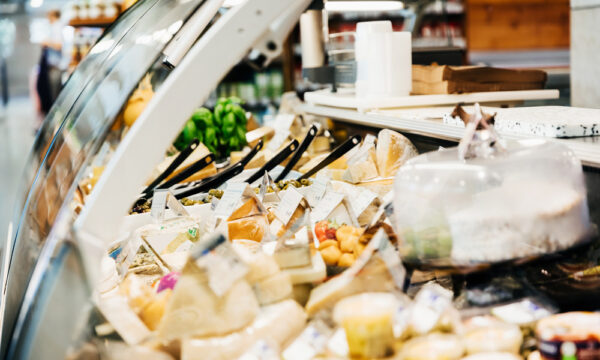
For many food and hospitality businesses, presentation is key. Deli and bakery cases keep products fresh and showcase them, enhancing their appeal to customers. Whether you run a bustling deli or a quaint bakery, the right refrigerated display case can impact sales. Here are different types and what to consider when shopping for one.
A Variety of Display Cases
The most common types of display cases used by food service providers include:
- Deli Cases: Delis frequently use these cases to display multiple products that need refrigeration, such as meat and cheese. They have multiple shelves and can keep products cool at about 40 °F. Single-shelf deli cases are also available.
- Bakery Cases: These cases come with and without refrigeration capabilities. Refrigerated cases have shelves and keep products at almost the same temperatures as deli cases. They can protect against excess moisture and are commonly used for confectionary, cakes and pies. Non-refrigerated cases are usually used to store bread, bagels and other baked products that require a dryer environment.
- Meat & Seafood Cases: These single-level refrigerated cases keep fresh poultry, seafood and meat at required storage temperatures without freezing. Glass-covered cases hold unwrapped meat and fish, while open-air models display wrapped products.
- Combination Display Cases: These cases have dual temperature zones, including a refrigerated and a dry non-refrigerated zone. Combination display cases are ideal for vendors that sell different products.
- Open Display Merchandisers: These cases offer refrigeration while targeting impulse purchases or other grab-and-go items. They are common at convenience stores.
- Hot Display Cases: Hot display cases keep prepared foods at ideal temperatures. Most have adjustable humidity control, which allows vendors to keep different products in them.
Different Types of Refrigeration
Display cases also vary based on the type of refrigeration they use. Two types include:
- Forced Air Display Cases: These cases are mostly used for prepackaged products, bakery products and sometimes in delis. They rely on built-in fans to circulate cold air throughout the case to keep products at the right temperatures. The air circulation can dry out products if they remain in the case too long or are left uncovered.
- Gravity Coil Display Cases: This type is mostly used to store salads, seafood, raw meat and other deli products. They are better equipped to keep products fresh rather than drying up. These cases often have a refrigeration coil at the top of the cabinet, allowing cool air to drop down over the products and reducing the likelihood of products drying out.
What To Consider When Buying a Display Case
Consider these factors when shopping for a display case:
- Temperature: Temperature is the most important factor in informing your purchase. Be sure to know what the ideal temperature is for storing your product before purchasing a unit.
- Humidity: Some products stay fresh in humid environments, while others do not. It’s always important to ask about a case’s humidity and whether it is suitable for your products. If you intend to keep a variety of products, it’s advisable to go for cases with adjustable humidity.
- Lighting: The right lighting helps customers easily view products. Some cases come with adjustable light installments. Keep in mind that bright lights can overwhelm softly lit environments.
- Shelving: The type of shelving impacts the amount of storage space the case offers. Cases with multiple shelves reduce the height clearance of individual items and may be unsuitable for tall items.
- Size: Display case sizes vary. To decide what size you need, factor in the amount of space the unit will occupy and where the case will be in your business. To enhance aesthetic appeal, ensure a product comfortably fits within the case rather than appearing crowded or scattered.
- Design: Consider end panels or curved glass. End panels can give your display case a bigger and fuller appearance. The mirrored interior enhances its presentation. Curved glass cases that tilt up or out are usually preferred as they are easier to clean. Here are some tips for cleaning a refrigerated display case.
- Color: Cases come in different colors. A black interior minimizes the appearance of the case’s internal hardware and makes colorful products pop. However, some health departments advocate for white display cases for sanitation purposes. It’s wise to check with your local health department before ordering a new display case.
The Perfect Display Cases
If you’re looking to buy a new display case for your business, browse all our commercial refrigeration equipment to find the perfect one. We offer unmatched customer service, unbeatable warranties and free shipping to nearly every location. We’re 5-star rated for a reason, and with over ten years of experience, we’re here to help.



















